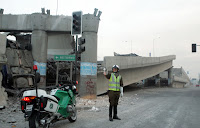Ver video original disponible en FNM
Sin embargo, después de 15 meses de gobierno, el Ministro Montes (del MINVU), contrario a lo que se entiende por eficiencia, aumentó la burocracia del sector creando más intermediaros—por ejemplo, a través de la Secretaría Ejecutiva de Condominios (SEC)—. Los anuncios en temas de vivienda se han limitado casi exclusivamente a la inauguración de proyectos habitacionales los que en su mayoría ya estaban en curso por el gobierno anterior. Aún menos se ha realizado en relación con nuevos proyectos de mejora urbana.
Su programa incorporó una gran variedad de tipologías en las que entre otras se incluía el aumento de la oferta de arriendo subsidiado, objetivo que en este primer año no se ha concretado. De acuerdo a un reciente estudio realizado por Libertad y Desarrollo, las soluciones habitacionales en el último año habrían caído en aproximadamente 40%, siendo éste el resultado más bajo de la última década (El Libero, 1.3.2023), lo que además de inaceptable, no se condice con el continuo aumento presupuestario en el sector habitacional.

































